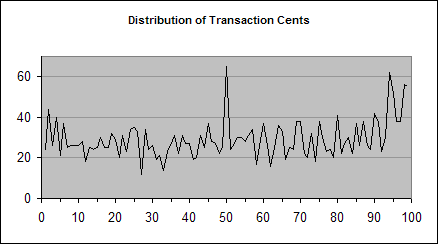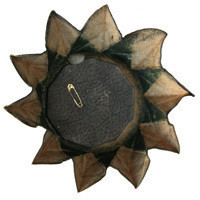Change Game
Introduction
When my wife and I decided to get married and start living together she found one of my habits to be a little annoying. It’s a habit that most guys have regarding change. Most guys probably have a jar, shoebox, or some other type of container that is filled with spare change. At the end of the day, you simply empty your pockets of change and put it in there. I had, over the years filled various containers full of change and every few years would lug it to the bank to be counted.
She didn’t think much of the boxes of change sitting around, so she tried to convince me to make a game out of using my change. Instead of thinking of all that spare change as a nuisance, it was a challenge to figure out how to use it in the right combinations. The goal of the game? To complete a cash transaction and have no change left in your pocket.
My slightly obsessive nature took this game and just ran with it of course! If you wish to play along, continue reading.
Recommended Equipment
The change game requires no equipment at all, but even intermediate players will find that their game play is improved with a simple coin purse. Here is an example of a leather coin purse that is ideal for the change game. Buy one here!

Coin purses can also be found in plastic, however they do not wear as well as the genuine leather type. This coin purse will allow you to keep your change organized, and by simply squeezing it’s sides the change game enthusiast can determine their change situation.
Rules
There are only a few rules to the change game.
- The ‘Give a penny, take a penny’ tray is completely out-of-bounds for the change game. You may not deposit a penny, or any other coin, into it or use a coin from it in your transaction. Ever!
- You cannot tip your way to a win. Simply taking the change you have and putting it in a tip jar disqualifies a win.
- The value of the coin is irrelevent for the change game, you only care about the number of coins. Having three quarters is as close to winning as three pennies.
- You win when you have no coins left!
Basic Strategy
When playing the change game you need to keep an eye on your current status. Strategically, certain combinations of coins are more likely to yield a win or be used quickly. Also, remember that small coins can be moved quickly.
For example, while 5 pennies are a lot of coins, you can use them very quickly as a nickel substitute.






  
 
A great tip while playing the change game is to combine nickels and dimes in place of quarters.





Advanced Strategy
To the uninitiated the change game can be a simple game of luck. It seems straightforward that you will have a set amount of change, hopefully less than $0.99, and the transaction will require change between $0.01 and $0.99. You have a 1 in 99 chance of winning. However, this assumes that the change required for transactions is evenly distributed.
To test wether this is indeed the case we analyzed 2,886 transactions over a 7 year period. These 2,886 transactions excluded restuarant bills (since they are typically rounded with a tip) and recurring payments or utility bills that would bias a specific cent value. We also excluded all transactions over $1,000 since it would be unlikely that cash would be used in such a transaction. The average transaction was $61.15 and the median was $35.29, with 1,850 of the samples being below $50, a very reasonable amount for a cash transaction. We then plotted the distribution of the change required for these transactions.

The distribution is not even. Nine values appear over 40 times in this analysis: $0.02, 0.04, 0.50, 0.80, 0.90, 0.94, 0.95, 0.98 and 0.99. While these 9 numbers only represent 9.1% of the possible winners, they are 15.8% of the transactions. In fact, if you just focus on the values above $0.90, those four values which only represent 4.0% of the possible outcomes are 7.8% of the actuals.
It is also clear that certain ranges or values should be avoided. There are nine more values that appear fewer than 20 times: $0.12, 0.27, 0.31, 0.33, 0.41, 0.58, 0.62, 0.66 and 0.74. While these should represent 9.1% of the winners, they actually are only 5.3%. Clearly combinations that should be avoided.
In general you can observe in the pattern that the range above $0.50 has a slightly higher likelihood of winning than the range below it.
Winning
You win the change game when you have depleted all of your coins. The coin purse on the left is an example of an ‘in play’ player and the coin purse on the right is after winning (the safety pin is not relevant to the change game).

